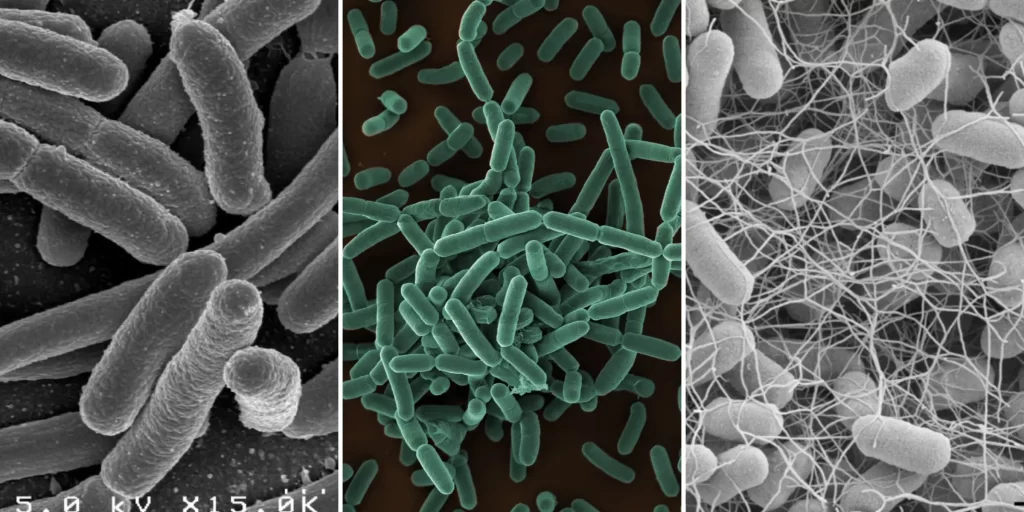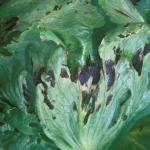E. coli, Listeria, and Salmonella
Introduction
Greenhouse and indoor agriculture have emerged as innovative and sustainable methods for growing crops. Nevertheless, food safety remains a paramount issue, given the possible presence of detrimental pathogens such as Escherichia coli (E. coli), Listeria, and Salmonella. In the United States alone, these pathogens were responsible for approximately 1.9 million illnesses in 2020 [1]. In this article, we will explore:
Understanding E. coli, Listeria, and Salmonella
E. coli, Listeria, and Salmonella are harmful bacteria that can contaminate plants and products, leading to severe health risks for consumers. These pathogens can cause sickness in the stomach, intestines and more (gastrointestinal illness), with symptoms such as diarrhea, abdominal pain, vomiting, and fever. In severe cases, these infections can lead to hospitalization or even death, particularly for vulnerable populations like the elderly, children, and individuals with weakened immune systems [2]–[6].
While many think that foodborne illnesses are due to contaminated meats, it is essential to note that E. coli, Listeria, and Salmonella can be in any contaminated food. According to the latest report by CDC, FDA, and USDA on illness sources, fruits and vegetable row crops are a common source of E. coli, Listeria, and Salmonella-caused illnesses [1].
We provide great overviews of many agricultural microorganisms. Subscribe to stay updated!
E.coli
Escherichia coli (E. coli) is a diverse group of bacteria commonly found in the environment, food, and intestines of humans and animals. While many strains of E. coli are harmless, some can cause severe illness, posing a significant risk to public health.
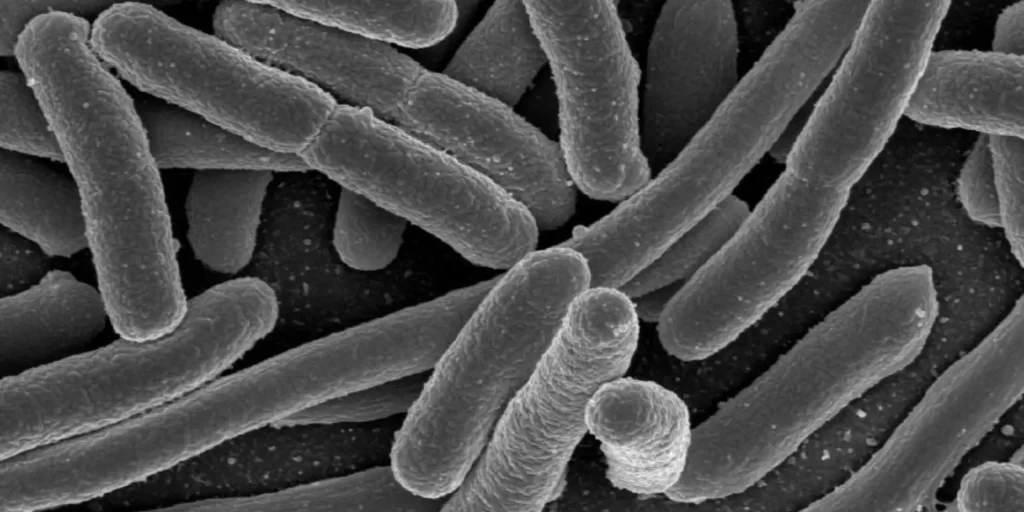
E. coli Strains
E. coli strains are grouped into various pathotypes based on their virulence factors, mechanisms of infection, and the diseases they cause. Some of the most significant pathogenic types include [7], [8]:
- Enterotoxigenic E. coli (ETEC): A leading cause of traveller’s diarrhea, ETEC produces heat-labile and heat-stable enterotoxins that induce diarrhea.
- Enteropathogenic E. coli (EPEC): EPEC strains cause diarrhea by attaching to and destroying the microvilli of the intestinal lining, mainly affecting infants and young children in developing countries.
- Enterohemorrhagic E. coli (EHEC): EHEC strains produce Shiga toxins, which can cause severe bloody diarrhea and potentially lead to life-threatening complications, such as hemolytic uremic syndrome (HUS). The most notorious EHEC strain is E. coli O157:H7.
- Enteroaggregative E. coli (EAEC): EAEC strains cause persistent diarrhea by adhering to the intestinal lining and forming a biofilm, affecting primarily infants and young children in developing countries.
- Enteroinvasive E. coli (EIEC): EIEC strains invade the intestinal lining and cause an inflammatory response, leading to symptoms similar to those of Shigella infection, such as bloody diarrhea and abdominal pain.
Common Sources of E. coli
E. coli can be found in a variety of sources, including [9], [10]:
- Contaminated water: E. coli can be present in untreated water sources, such as wells, streams, and lakes. Drinking or swimming in contaminated water can lead to infection.
- Person-to-person transmission: E. coli can spread from one person to another through poor hygiene, such as inadequate handwashing after using the restroom or changing diapers.
- Animal contact: Direct contact with animals, particularly cattle, can result in the transmission of E. coli. This can occur at farms, petting zoos, or through water runoff of livestock.
- Contaminated food: E. coli can contaminate food during production, processing, or preparation. Common sources include undercooked ground beef, raw milk, unpasteurized juices, and contaminated fresh produce.
Detecting E. coli
Various methods are available for detecting E. coli, including [11], [12]:
- Culture-based methods: Traditional detection methods involve culturing samples on selective agar media, such as MacConkey or sorbitol-MacConkey agar. After incubation, characteristic colonies can be identified and counted.
- Polymerase chain reaction (PCR): PCR-based methods can quickly and accurately detect specific E. coli strains by targeting unique DNA sequences. These highly sensitive methods can be used to identify pathogenic strains in contaminated samples.
- Enzyme-linked immunosorbent assay (ELISA): ELISA techniques can detect the presence of specific E. coli antigens or toxins in samples. While less sensitive than PCR, ELISA methods provide rapid results and can be used for large-scale screening.
- Lateral flow assays: These rapid tests detect E. coli antigens or toxins using antibody-based test strips. Lateral flow assays are simple to perform, provide results within minutes, and are suitable for on-site testing, making them a valuable tool for preliminary screening.
- Genetic Sequencing or Next-generation sequencing (NGS): Sequencing techniques, such as whole-genome sequencing, can provide detailed information on E. coli strains, including virulence factors, antibiotic resistance, and genetic relatedness. While more expensive and time-consuming than other methods, NGS offers unparalleled resolution for outbreak investigations and surveillance.
E.coli Quick Summary
E. coli is a diverse group of bacteria with several pathotypes that can cause human illness. These pathogens can be in contaminated food and water, through contact with animals, or via person-to-person transmission. Detection methods for E. coli range from traditional culture-based techniques to advanced molecular and sequencing methods. Understanding the different strains, sources, and detection methods is crucial for monitoring and controlling the spread of E. coli, ultimately ensuring the safety of our food supply and public health.
Listeria
Listeria is a genus of bacteria that can cause a foodborne illness known as listeriosis in humans and animals. Listeria infections can lead to severe symptoms, such as fever, muscle aches, and gastrointestinal problems. They can be particularly dangerous for pregnant women, newborns, individuals of more senior years, and individuals with weakened immune systems [6].
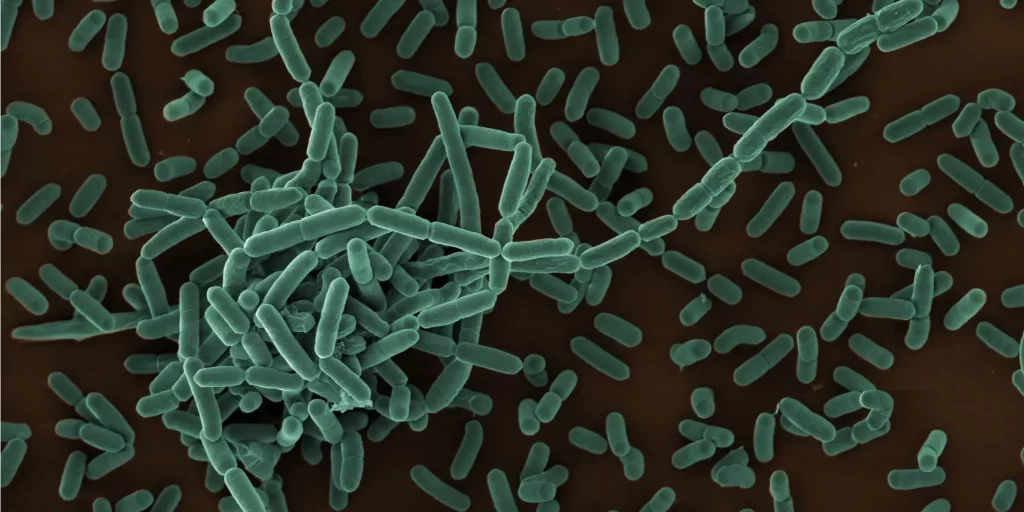
Listeria Strains
There are several species of Listeria, but Listeria monocytogenes cause most human infections. Other species, such as Listeria ivanovii and Listeria seeligeri, are primarily associated with animal infections [13], [14].
Common Sources of Listeria
Listeria can be found in a variety of sources, including [15], [16]:
- Soil and water: Listeria can be found in soil, water, and decaying vegetation, which can lead to the contamination of fruits and vegetables.
- Contaminated environment: Listeria can survive and grow in various environmental conditions, including cold temperatures, which allows it to persist in food-processing facilities and refrigerated environments.
- Animal reservoirs: Listeria can be carried by animals, such as cattle, poultry, and fish, leading to contamination of animal-derived products.
- Contaminated food: Listeria can contaminate food during production, processing, or preparation. Common sources include ready-to-eat deli meats, hot dogs, smoked seafood, soft cheeses, raw milk, and refrigerated meat spreads.
Detecting Listeria
Various methods are available for detecting Listeria, including [17]:
- Culture-based methods: Traditional detection methods involve culturing samples on selective agar media, such as Listeria Oxford (LOX) or Palcam agar. After incubation, characteristic colonies can be identified and confirmed through biochemical tests or serotyping.
- Polymerase chain reaction (PCR)
- Enzyme-linked immunosorbent assay (ELISA)
- Lateral flow assays
- Genetic Sequencing or Next-generation sequencing (NGS)
Listeria Quick Summary
Listeria is a group of bacteria that can cause severe foodborne illnesses in humans and animals. These pathogens can be found in contaminated food, the environment, soil, water, and animal reservoirs—detection methods for Listeria range from traditional culture-based techniques to advanced molecular and sequencing methods. Understanding the different strains, sources, and detection methods is essential for monitoring and controlling the spread of Listeria, ultimately ensuring the safety of our food supply and public health. By staying vigilant and proactive in managing food safety risks, we can better protect consumers and minimize the impact of Listeria infections. In addition, food producers, processors, and handlers must implement strict hygiene measures and adhere to regulatory guidelines to prevent the contamination and growth of Listeria in food products. By working together, we can reduce the occurrence of listeriosis and promote a healthier and safer food supply for everyone.
Salmonella
Salmonella is a group of bacteria that can cause foodborne illnesses known as salmonellosis in humans and animals. Salmonella infections can lead to gastrointestinal symptoms, such as diarrhea, abdominal pain, and fever, and can be severe or even life-threatening in some cases [5].
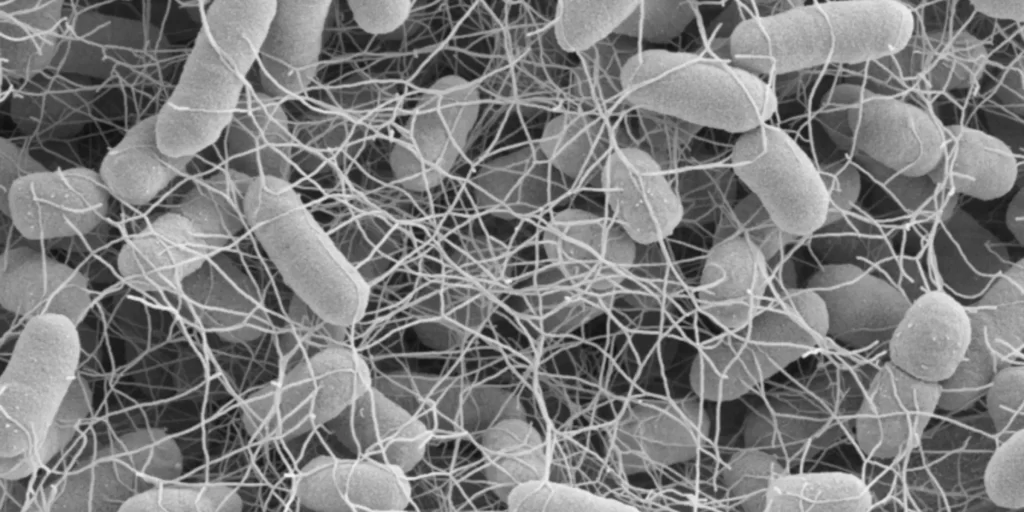
Salmonella Strains
There are over 2,500 types of Salmonella, but most human infections are caused by two species: Salmonella enterica and Salmonella bongori. Salmonella enterica contains the majority of strains (also known as serotypes) that cause human illness. Some of the most common serotypes include [18]–[20]:
- Salmonella enterica serotype enteritidis: A leading cause of salmonellosis worldwide, often associated with consuming contaminated eggs and poultry.
- Salmonella enterica serotype typhimurium: Another major cause of salmonellosis, linked to various food sources, including meat, poultry, and fresh produce.
- Salmonella enterica serotype typhi: The cause of typhoid fever, a severe systemic illness transmitted through contaminated food and water in areas with poor sanitation.
- Salmonella enterica serotype paratyphi: Responsible for paratyphoid fever, a milder form of typhoid fever, also transmitted through contaminated food and water.
Common Sources of Salmonella
Salmonella can be found in a variety of sources, including [18], [21]:
- Contaminated water: Drinking or using water contaminated with Salmonella can lead to infection. Water sources can become contaminated through contact with animal feces or sewage.
- Person-to-person transmission: Salmonella can spread from one person to another through poor hygiene, such as inadequate handwashing after using the restroom or changing diapers.
- Animal contact: Direct contact with animals, particularly reptiles, amphibians, and birds, can result in the transmission of Salmonella. This can occur at pet stores, homes, or through contact with contaminated animal products.
- Contaminated food: Salmonella can contaminate food during production, processing, or preparation. Common sources include raw or undercooked meat, poultry, eggs, raw milk, and fresh produce.
Detecting Salmonella
Various methods are available for detecting Salmonella, including [22]:
- Culture-based methods: Traditional detection methods involve culturing samples on selective agar media, such as Xylose Lysine Deoxycholate (XLD) or Hektoen Enteric (HE) agar. After incubation, characteristic colonies can be identified and confirmed through biochemical tests or serotyping.
- Polymerase chain reaction (PCR)
- Enzyme-linked immunosorbent assay (ELISA)
- Lateral flow assays
- Genetic Sequencing or Next-generation sequencing (NGS)
Salmonella Quick Summary
Salmonella is a diverse group of bacteria that can cause foodborne illnesses in humans and animals. These pathogens can be found in contaminated food, water, animal contact, or via person-to-person transmission—detection methods for Salmonella range from traditional culture-based techniques to advanced molecular and sequencing methods. Understanding the different strains, sources, and detection methods is essential for monitoring and controlling the spread of Salmonella, ultimately ensuring the safety of our food supply and public health. In addition, by staying vigilant and proactive in managing food safety risks, we can better protect consumers and minimize the impact of Salmonella infections.
Food Safety Measures for Greenhouse and Indoor Farming
- Hand Washing: a key point to combating pathogens of any kind! A big part of sanitation and hygiene that it deserves its own mention, handwashing should be upheld by everyone on the farm.
- Sanitation and Hygiene: Maintain a clean and sanitary environment in your greenhouse or indoor farm by regularly cleaning and disinfecting surfaces, equipment, and tools. Encourage workers to practice proper hygiene, such as wearing gloves and avoiding work when sick.
- Water Management: Ensure that irrigation water is clean and free from contamination. Use proper filtration and disinfection methods to minimize the risk of introducing pathogens through water sources.
- Pest Control: Implement measures to control rodents, insects, and other pests that can spread pathogens. Regularly inspect and monitor your facility for signs of infestation and take prompt action to address any issues.
- Air Quality and Circulation: Good air circulation and quality can help prevent the growth and spread of pathogens. Utilize proper ventilation systems and maintain optimal humidity levels to minimize the risk of contamination.
- Employee Training: Educate employees about food safety practices and the risks associated with E. coli, Listeria, and Salmonella. Provide regular training to ensure that workers are aware of the steps they can take to prevent contamination and maintain a safe growing environment.
- Crop Monitoring and Testing: Regularly inspect plants for signs of disease or contamination. Conduct periodic testing for the presence of pathogens to identify and address issues promptly.
- Traceability and Recall Plans: Implement a traceability system that allows you to track your produce from seed to sale. This will enable you to quickly identify and recall any products that may be contaminated, limiting the impact on consumers and your business.
Conclusion
Food safety is critical to greenhouse and indoor farming, especially when dealing with dangerous pathogens like E. coli, Listeria, and Salmonella. By implementing strict sanitation and hygiene measures, managing water and air quality, controlling pests, training employees, monitoring crops, and establishing traceability and recall plans, you can help ensure the production of safe, high-quality produce for your customers. Stay vigilant and proactive in your approach to food safety to protect both consumers and your business from the risks posed by these harmful bacteria.
Disclaimer
The information we present in this blog is based on collating published peer-reviewed scientific literature and sources we think are reliable. This is by no means an exhaustive review of pathogens. This blog gives a small glimpse of what is known about pathogens. We encourage growers to do more research on the pathogens concerning their crops and hydroponic systems. We are not plant pathologists; thus, the information presented in this blog should not be used as professional advice to treat pathogens or operate your system.
References
[1] U.S. Department of Health and Human Services, CDC, FDA. (2022). Annual Reports on Foodborne Illness Source Attribution Estimates. Atlanta, Georgia and Washington, District of Columbia. Available at https://www.cdc.gov/foodsafety/ifsac/annual-reports.html
[2] CFIA. (2022). Bacterial Pathogens and Indicators in Fresh Baby Leafy Vegetables – April 1, 2018 to March 31, 2021. Ottawa, ON. Available at https://inspection.canada.ca/food-safety-for-industry/food-chemistry-and-microbiology/food-safety-testing-bulletin-and-reports/final-report/eng/1642698065304/1642698065992
[3] CDC. (2023). Fruit and Vegetable Safety. Food Safety. Available at https://www.cdc.gov/foodsafety/communication/steps-healthy-fruits-veggies.html
[4] CDC. (2022). E. coli (Escherichia coli). Available at https://www.cdc.gov/ecoli/index.html
[5] CDC. (2022). Salmonella. Available at https://www.cdc.gov/salmonella/
[6] CDC. (2022). Listeria (Listeriosis). Available at https://www.cdc.gov/listeria/
[7] Abri, R., et al. (2019). Surveillance for enterotoxigenic & enteropathogenic Escherichia coli isolates from animal source foods in Northwest Iran. Indian J. Med. Res., 150(1), 87–91. doi: 10.4103/ijmr.IJMR_2019_17.
[8] Kaper, J. B., Nataro, J. P., & Mobley, H. L. T. (2004). Pathogenic Escherichia coli. Nat. Rev. Microbiol., 2(2), 123–140. doi: 10.1038/nrmicro818.
[9] CDC. (2023). E. coli and Food Safety. Available at https://www.cdc.gov/foodsafety/communication/ecoli-and-food-safety.html
[10] Health Canada. (2017). Causes of E. coli (Escherichia coli) infection. Available at https://www.canada.ca/en/public-health/services/diseases/e-coli/causes-e-coli.html
[11] Feng, P., Weagant, S. D., Grant, M. A., & Burkhardt, W. (2020). BAM – Chapter 4: Enumeration of Escherichia coli and the Coliform Bacteria | FDA. Available at https://www.fda.gov/food/laboratory-methods-food/bam-chapter-4-enumeration-escherichia-coli-and-coliform-bacteria#conventional
[12] Peter, F., Stephen, D. W., & Karen, J. (2018). BAM – Chapter 4A: Diarrheagenic Escherichia coli. Available at https://www.fda.gov/food/laboratory-methods-food/bam-chapter-4a-diarrheagenic-escherichia-coli
[13] Muchaamba, F., Eshwar, A. K., Stevens, M. J. A., Stephan, R., & Tasara, T. (2022). Different Shades of Listeria monocytogenes: Strain, Serotype, and Lineage-Based Variability in Virulence and Stress Tolerance Profiles. Frontiers in Microbiology, 12. doi: 10.3389/fmicb.2021.792162
[14] Pan, Y., Breidt, F. J., & Kathariou, S. (2009). Competition of Listeria monocytogenes serotype 1/2a and 4b strains in mixed-culture biofilms. Appl. Environ. Microbiol., 75(18), 5846–5852. doi: 10.1128/AEM.00816-09.
[15] CDC. (2019). Prevent Listeria. Centers for Disease Control and Prevention. Available at https://www.cdc.gov/listeria/prevention.html
[16] Gartley, S., Anderson-Coughlin, B., Sharma, M., & Kniel, K. E. (2022). Listeria monocytogenes in Irrigation Water: An Assessment of Outbreaks, Sources, Prevalence, and Persistence. Microorganisms, 10(7). doi: 10.3390/microorganisms10071319.
[17] Hitchins, A. D., Jinnema, K., & Chen, Y. (2017). BAM – Chapter 10: Detection of Listeria monocytogenes in Foods and Environmental Samples, and Enumeration of Listeria monocytogenes in Foods. FDA. Available at https://www.fda.gov/food/laboratory-methods-food/bam-chapter-10-detection-listeria-monocytogenes-foods-and-environmental-samples-and-enumeration
[18] Ehuwa, O., Jaiswal, A. K., & Jaiswal, S. (2021). Salmonella, Food Safety and Food Handling Practices. Foods (Basel, Switzerland), 10(5). doi: 10.3390/foods10050907.
[19] Saleh, S., et al. (2019). Salmonella Typhi, Paratyphi A, Enteritidis and Typhimurium core proteomes reveal differentially expressed proteins linked to the cell surface and pathogenicity. PLoS Negl. Trop. Dis., 13(5), e0007416. doi: 10.1371/journal.pntd.0007416.
[20] Fookes, M., et al. (2011). Salmonella bongori provides insights into the evolution of the Salmonellae. PLoS Pathog., 7(8), e1002191. doi: 10.1371/journal.ppat.1002191.
[21] Canadian Food Inspection Agency, Health Canada, and Public Health Agency of Canada. (2016). Causes of salmonellosis (Salmonella). Available at https://www.canada.ca/en/public-health/services/diseases/salmonellosis-salmonella/causes.html
[22] Andrews, W. H., Wang, H., Jacobson, A., Ge, B., Zhang, G., & Hammack, T. (2021). BAM – Chapter 5: Salmonella. FDA. Available at https://www.fda.gov/food/laboratory-methods-food/bam-chapter-5-salmonella
![]()
David Santos is an Agritech Advisor at Healthy Hydroponics InnoTech


